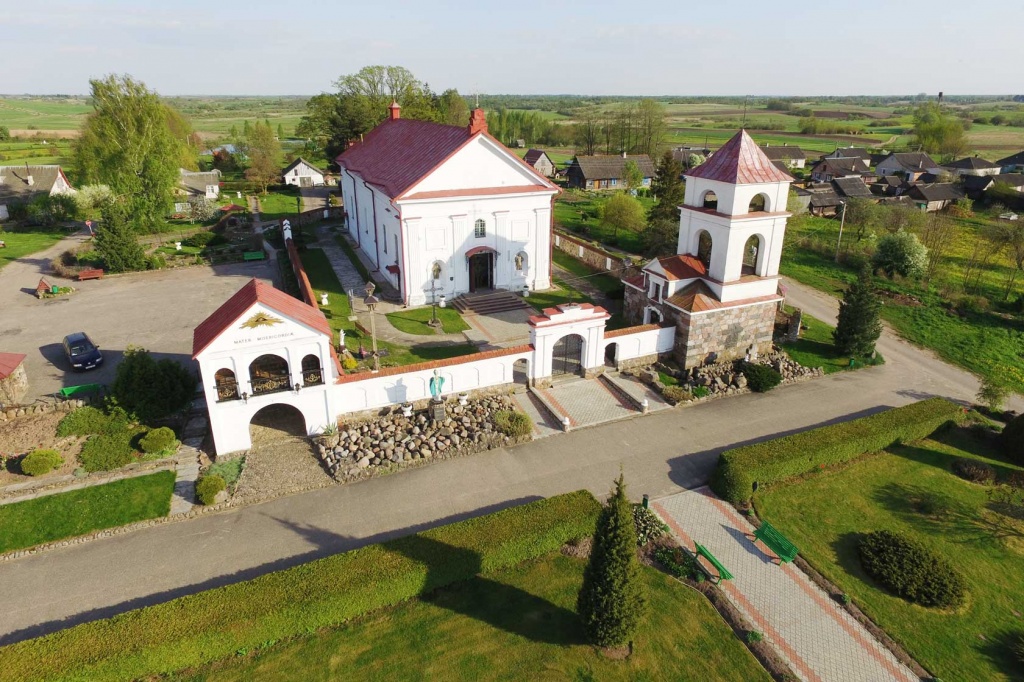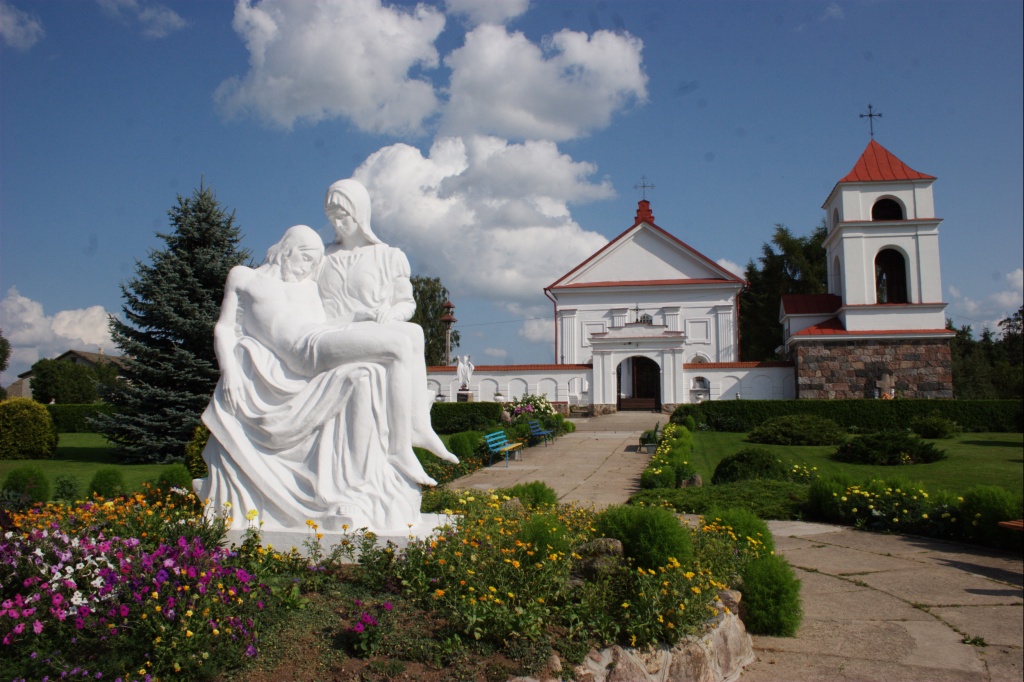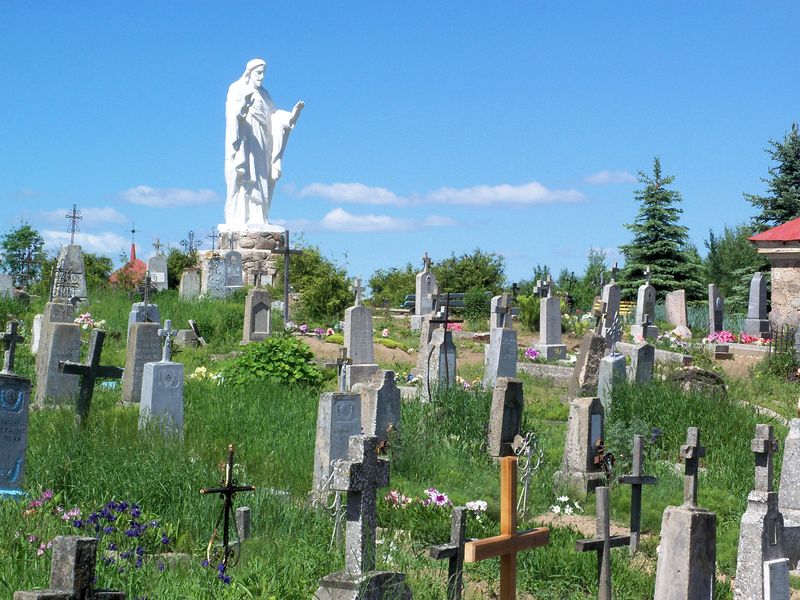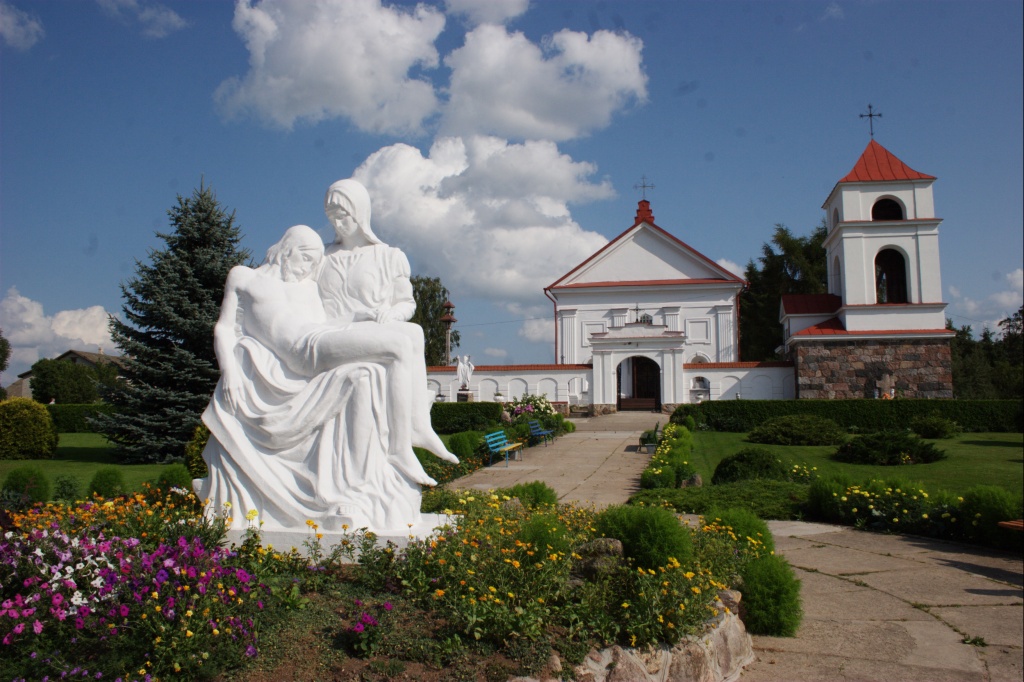Weekend in Belarus: Mosar
At a first glance, Mosar is a small village in the Glubokoe district of the Vitebsk region. This is truly a fabulous place where you want to return to. Mosar is also called the Belarusian Versailles.
Mosar was first mentioned in the documents in1514 year. At the end of the XVIII century the village was the property of Robert and Anna Bzhestovskih. The owners of lands improved the territory and built a palace. According to the legend, Italians - students of Michelangelo were involved in the construction of the palace. Unfortunately, after the revolution during the Civil War, the palace was completely destroyed. Despite this, Mosar is an interesting cultural and dendrological complex.
The Church of St. Anne.
The Church of St. Anne was built near the palace in 1792. The main shrine of the church are the relics of St. Justinian, they are kept in a silver sarcophagus under the altar of repose. The story of how a shrine was brought is truly mysterious. In the XIX century, a carriage with the relics of St. Justine was in Belarusian and Lithuanian temples. At the time, the relics of saints were often taken to towns and villages so that everyone could touch the shrine. Having reached the Mosar Church of St. Anne, the carriage stopped. The horses did not want to go any further. No persuasion and threats could move them. Religious Mosar church-goers decided that this was the will of the Holy Justin. He wished his relics to be permanently sheltered in Mosar.
St. Justin is a special saint. He helps alcoholics to begin a sober life. People wishing to get rid of the alcohol addiction used to come here from all over.

The uniqueness of the Church of St. Anne in Mosar is that it was always functioning. With the advent of Soviet power, the Church of St. Anne was in decline for many years. The new restoration of the church began in 1988, when the Roman Catholic priest Juozas Bulka took a leading role. He was able to transform not only the church and its surroundings, but also to lead the local population. A small village in the west of Belarus has turned into an eye-pleasing tourist center, and the locals deliberately refused to drink.


In front of the church you can see a copy of the statue of Michelangelo "The statue of the Virgin Mary grieving over the body of Jesus lying on her lap after the Crucifixion." The first-in-Belarus growth statue of the Pope John Paul II was installed in front of main gates of the church. All this was done by Belarusian masters on the priest Juozas’ request. There is a water source in the depths of the park behind the church. Several water analyses show that it contains many useful minerals and trace elements. And after blessing of the water source, water is also considered to be holy. From the holy water there is an alley of sobriety, at the end of the alley there is a statue. It’s Moses points at the board with Ten Commandments.
In the back of the arboretum, the "road to Calvary" begins. The lay of the land made it possible to make a model of the road to Calvary, passed by Christ. Near the beginning of the road you can see the statue of Jesus bearing the cross. At the end of the road there is the highest cross in Belarus (about 25 meters high). At the foot of the cross - a sculptural composition, under it - a scale model of the Holy Sepulcher.

The old Mosar cemetery is also unique. It is divided into confessions: Catholics and Orthodox Christians are buried nearby. The cemetery had a cared-for look, when the Roman Catholic priest started the restoration. The first thing done at his direction was that the fences were removed from all the graves. The cemetery took a completely different look. It was enclosed with a beautiful stone fence, and a five-meter white statue of Christ was erected in the center of the cemetery. He is ready to embrace every soul that has returned to him.
In Mosar you can also visit the unusual place – antialcoholic museum. It exhibits real hootch stills, made by local residents.
The branch of Glubokoe Historical Ethnographic Museum is always open for visiting. It is located in a former two-hundred-years-old wooden barn. The barn was built next to the church for household purposes. The uniqueness of the building is that it was created without a single nail.

Mosar is an amazing and even unique village of Belarus. It's definitely worth a visit. Have a good trip!




